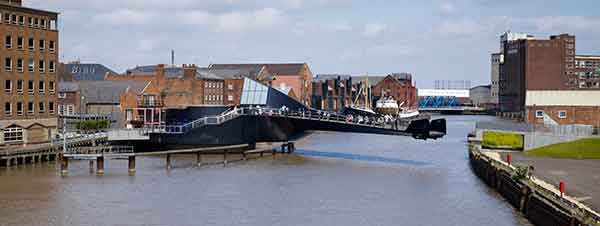News
Reed bridge chosen as Eastern landmark
East Anglia is to press ahead with construction of two bridges which are intended to become symbols of the region in the same way as the Angel of the North and the Gateshead Millennium Bridge have for North-East England.
The projects, the Bridge of Reeds and the Dragonfly Bridge, emerged as front runners following a design competition held by the East of England Development Agency, from which four went forward to feasibility studies.
The Bridge of Reeds was designed by Landscape East, a team led by environmental design consultancy LDA Design with structural engineer Alan Baxter Associates. It would cross one of the region’s main roads, the A14, on the outskirts of Cambridge, providing a pedestrian and cycle link the National Trust’s Wicken Fen nature reserve with another 6,000ha of green space.
The 54m high bridge consists of a curved steel deck hung from a tripod of tall, tapering reed-leaf shaped masts formed from specially fabricated pieces of weathering steel plate. The deck is supported by high tensile steel suspension rods reminiscent of a curtain of reeds. Some of these would extend beyond the masts to a height of 49m, supporting steel bird sculptures which will sway gently in the wind.
Following a further design and fundraising stage, construction is due to start in 2008. EEDA is expected to provide between £1M and £2M of the estimated £7.4M construction costs.
Landscape East also includes The National Trust, Greater Cambridge Partnership. Mott MacDonald (project manager) and the Marshall Group, working with the Highways Agency.
The Dragonfly Bridge will not strictly speaking be a landmark because it will be demountable. Designed to capitalise on the region’s network of waterways, along which it could be moved, it will incorporate a stage allowing it to be used as a venue for concerts and other performances. It will comprise barge-like buoyant elements made from steel plate, a central turntable comprising a steel bearing and a bridging structure made from hinged steel beams. Hydraulic actuators will allow movement of the bridge. It is designed by Watermarking, consisting of planning consultancy Urban Initiatives, Glen Howells Architects and Martin Stockley Associates.














